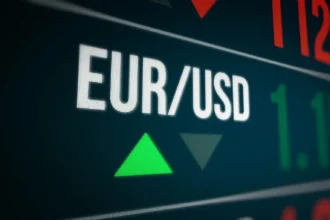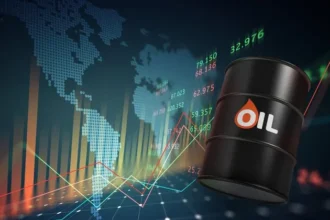Goldman Sachs has significantly revised its gold price forecast for the end of 2025, projecting a new target of $3,700 per ounce, up from the previous estimate of $3,300. This adjustment reflects stronger-than-anticipated demand from central banks and increased inflows into gold-backed Exchange-Traded Funds (ETFs), driven by growing concerns over potential recession risks.
Key Drivers Behind the Forecast
1. Central Bank Gold Demand
Central banks have been purchasing gold at an accelerated pace, with Goldman Sachs raising its monthly demand forecast from 70 to 80 metric tons. This surge in demand is significantly higher than the pre-2022 baseline of 17 tons per month. The increased buying activity is attributed to efforts by central banks to diversify reserves and hedge against geopolitical and economic uncertainties.
2. ETF Inflows Amid Recession Concerns
Gold-backed ETFs have seen substantial inflows as investors seek safe-haven assets amid fears of an impending recession. Goldman Sachs notes that if a recession occurs, ETF inflows could accelerate further, potentially lifting gold prices to $3,880 per troy ounce by year-end.
Market Context and Recent Developments
Gold prices have recently reached record highs, with spot gold hitting $3,245.42 per ounce. However, prices slightly eased to $3,230.79 following temporary tariff exemptions on smartphones and computers by the U.S., which reduced immediate safe-haven demand. Despite this, ongoing trade tensions and a weaker U.S. dollar continue to create uncertainty, potentially pushing gold prices toward $3,300.
Alternative Scenarios
Goldman Sachs outlines alternative scenarios based on varying economic conditions:
- Recession Scenario: If a recession materializes, accelerated ETF inflows could drive gold prices up to $3,880 per ounce by the end of 2025.
- Growth Scenario: Conversely, if economic growth surprises to the upside due to reduced policy uncertainty, ETF flows might revert to rates-based predictions, with year-end prices closer to $3,550 per ounce.
Implications for Investors
The revised forecast underscores gold’s role as a strategic asset in diversified portfolios, particularly during periods of economic uncertainty. Investors may consider increasing exposure to gold through physical bullion, ETFs, or mining stocks to hedge against potential market volatility and inflationary pressures.
Frequently Asked Questions (FAQ)
1. Why did Goldman Sachs raise its gold price forecast for 2025?
Goldman Sachs increased its forecast due to stronger-than-expected central bank gold purchases and rising ETF inflows amid growing recession risks.
2. What factors could cause gold prices to reach $3,880 per ounce?
A potential recession could accelerate ETF inflows, driving gold prices up to $3,880 by year-end.
3. How does central bank demand influence gold prices?
Increased central bank purchases reduce market supply and signal confidence in gold as a reserve asset, thereby supporting higher prices.
4. What role do ETFs play in the gold market?
ETFs provide investors with exposure to gold without physical ownership, and increased inflows indicate higher demand, which can drive up prices.
5. How might economic growth affect gold prices?
If economic growth exceeds expectations, reduced uncertainty may lead to lower ETF inflows, potentially capping gold prices around $3,550 per ounce.
Disclaimer
This article is for informational purposes only and does not constitute financial advice. Investors should conduct their own research or consult with a financial advisor before making investment decisions.



